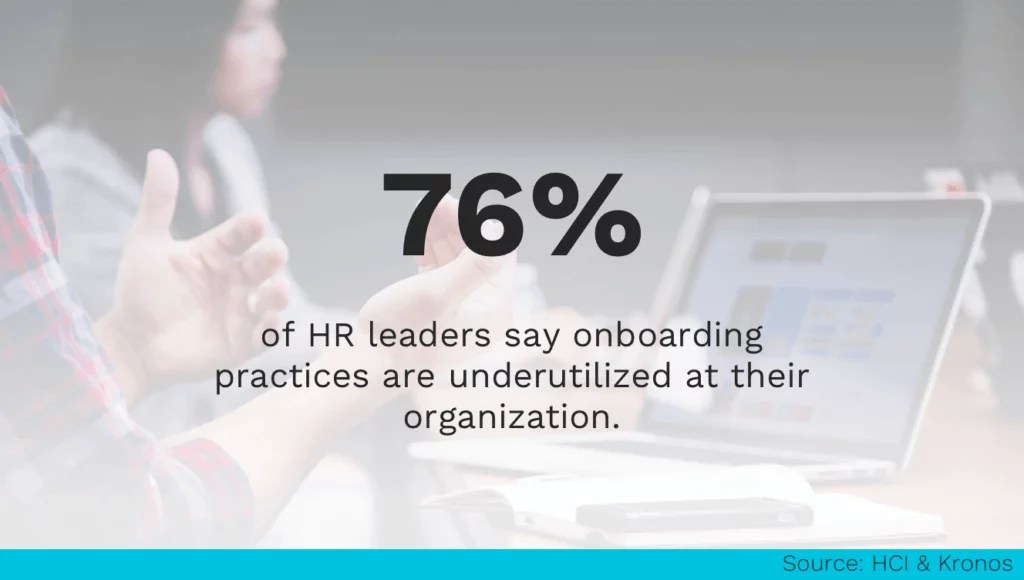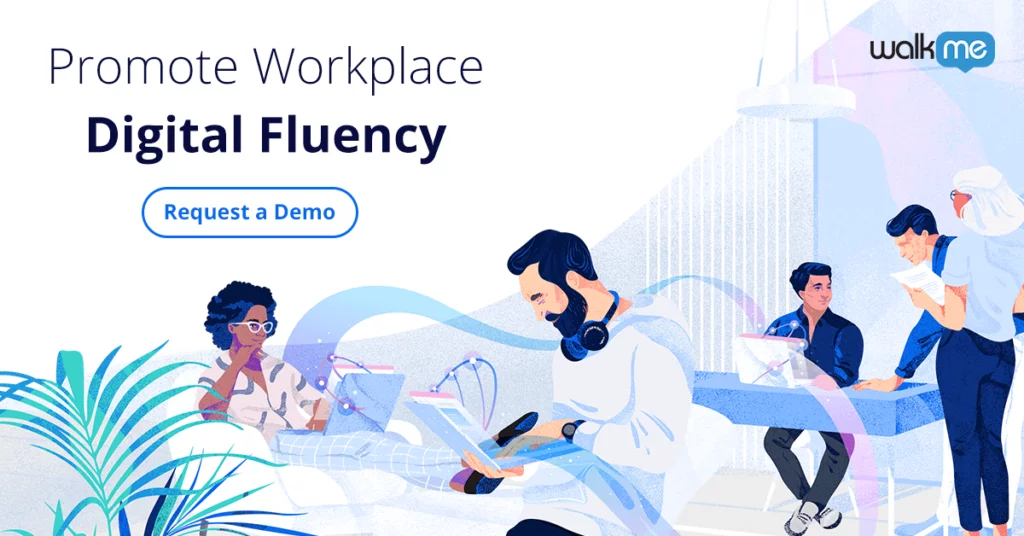Digital technology plays a crucial role in the employee onboarding process, yet many organizations underestimate how important digital onboarding truly is.
To stay competitive in the digital economy, HR and IT departments should work together to ensure that employees stay as engaged and productive as possible. And one of the best ways to do that is by integrating new hires into the workforce with a well-structured onboarding process.
Employee onboarding vs. digital onboarding
HR professionals are more than likely familiar with employee onboarding.
During this stage of the employee journey, managers and coworkers will help ease new hires’ transition into the workplace.
Employee onboarding focuses on areas such as:
- Orientation to the company, its mission, and the workplace
- Introductions to coworkers and managers
- Explaining key protocols and procedures
It should also include digital onboarding – that is, onboarding that focuses on digital tools and workflows.
In the context of the workplace, digital onboarding revolves around tasks such as:
- Software walkthroughs and product tours
- Basic job training
- Introductions to technical support and self-service support options
Like employee onboarding, digital onboarding should improve employee skills, while also easing their transition into the workplace.

What is the value of digital onboarding in the workplace?
Research has shown that onboarding programs affect employee metrics such as productivity, engagement, and retention.
Digital onboarding, likewise, impacts the digital employee experience.
A good digital onboarding process can, for instance, positively impact:
- Time-to-competency
- Software proficiency
- Engagement and productivity
To achieve tangible benefits such as these, though, it is necessary for business units to collaborate closely and design a focused digital onboarding program.
3 tips on how to structure the digital employee onboarding process
Here is a high-level overview of the steps to take when designing digital onboarding programs:
1. Clarify the purpose of the digital onboarding program
In order to achieve the goals of an onboarding program, it is first necessary to set goals.
The benefits mentioned above, such as decreased time-to-competency and increased productivity, are a good place to start.
Setting those goals, however, is only the first step.
It is equally important to:
Translate those goals into measurable objectives. A goal is the formulation of an aim. “Decreasing new hires’ learning time,” for instance, would be considered a goal. However, to measure the ROI of the onboarding process, it is necessary to actually translate that goal into a measurable objective. If we translated the above goal into a measurable objective, it could be formulated like this: “Decrease new hires’ time-to-competency by 25%.”
Create a set of metrics and KPIs. Naturally, an employee onboarding program will have a number of goals and objectives. Those objectives should be among the first metrics to focus on. But the more metrics that are used, the deeper the insights that can be gained. Digital onboarding metrics can include numbers such as time-to-competency, productivity levels, job satisfaction, error rates, and other relevant employee performance data.
Establish mechanisms for tracking those metrics. A range of sources can be used to track onboarding metrics, such as employee surveys, software usage statistics, customer polls, manager feedback, and more.
In short, a data-driven approach can help managers connect the onboarding program’s performance to its stated outcomes.
2. Develop a digital onboarding strategy
A strategy is an articulated approach to achieving a set of goals.
In the case of digital onboarding, goals tend to revolve around creating a streamlined, productive work environment.
Onboarding strategies will therefore often focus on areas such as:
Digital training. Every organization employs its own unique set of digital tools and workflows, so new hires will often require a certain amount of on-the-job training. Since the quality of that training directly impacts employee productivity, onboarding specialists should find the most effective, efficient training methods possible.
The digital workplace experience. In the modern enterprise, employees spend their entire workday immersed in digital technology. The better their experience with that technology, the more satisfied and productive they will be. A general rule of thumb is the more simple the better. This is even more true during digital onboarding, when employees are often faced with a daunting array of digital tools.
Support solutions. New hires will inevitably have questions about their digital workflows. Having easy access to technical support, managerial support, and self-service support solutions can significantly improve the onboarding experience and, ultimately, employee performance.
After a strategy has been developed and tied to the program’s goals, it is time to actually test the onboarding process to see if it works.

3. Implement and monitor the program’s health
As with any other business process, onboarding programs should be continually monitored and optimized to ensure that the program meets its objectives.
To that end, managers should:
Continually collect data, track metrics, and evaluate performance. Generally speaking, frequent data collection is best. The more often managers can review data and collect feedback, the more tuned in they will be to the program and its performance.
Stay agile and optimize the program as needed. Another reason to monitor program performance continuously is that real-time insights enable real-time adjustments. When managers can react quickly to onboarding and training issues, they will be able to reduce error rates, enhance program performance, and improve employee metrics.
Assess the program’s impact on other important business metrics, such as financial data. Every business process should be evaluated in terms of its impact on the organization itself, since this is what drives decision-making at the highest levels. Business leaders are often most interested in a program’s financials, its impact on organizational performance, and its contribution to strategic agendas.
Ultimately, keeping the above points in mind can help onboarding specialists produce positive outcomes, not only for employees, but also for the organization as a whole.


